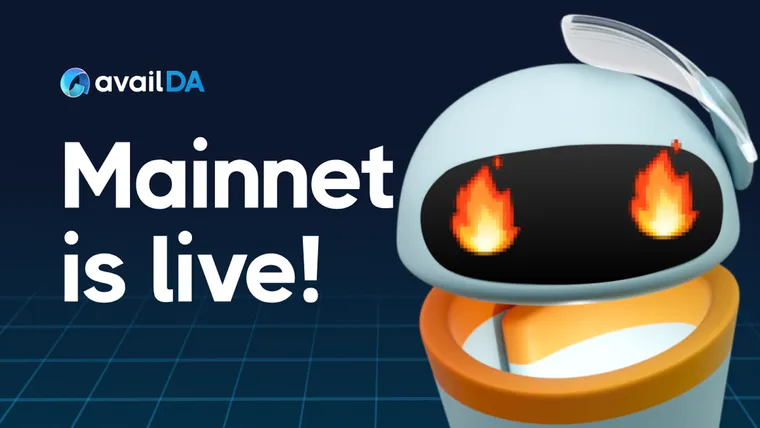We believe the blockchain community is unstoppable when we are all unified. That’s why we’re launching Avail DA on mainnet to not only boost blockchain scalability, but lay a foundation for seamless usability across any blockchain ecosystem.
Avail DA introduces the first modular data availability layer that combines validity proofs and data availability sampling to provide secure DA guarantees, enabling entire networks of blockchains to scale efficiently.
Avail DA enables:
- L2 solutions to reduce operational costs and enhance scalability by implementing Validiums, Optimiums or Sovereign Rollups.
- RaaS providers to build with a robust, validity proof based DA layer that’s optimized for ZK tech.
- Blockchain devs to access scalable blockspace for their modular tech stack.
- Token holders to stake their AVAIL on staking.avail.tools.
The Road to Mainnet
In late 2020, Anurag Arjun teamed up with his future co-founder Prabal Banerjee to bring blockchains to everyone. They honed in on the crucial importance of a credibly neutral data availability (DA) layer that would empower blockchains to scale more efficiently. This led to the birth of Avail. By March 2023, the Avail team spun out from Polygon Labs as an independent entity to pursue its vision—one that captured the imagination of the industry’s leading investors including Peter Thiel’s Founders Fund, Dragonfly Capital, Cyber Fund, and many more.
Over the past few months, Avail has worked hand-in-hand with the growing community to bring this vision to life securing more than 70 partnerships. This includes the 5 largest L2 ecosystems, making Avail DA accessible to developers building on Arbitrum, Optimism, Polygon, Starkware and ZKsync.
Both Clash of Nodes and the Light Client Lift-off Challenge, two incentivized testnet campaigns, enabled network participants to help validate the network and run light clients. Over 87,000 accounts contributed to the Goldberg Testnet which processed more than 118 million transactions. During the testing phase alone, Avail DA facilitated enough data submissions to satisfy the demands of almost all the L2s in 2023 (140 GB). This was followed by announcing the AVAIL token.
Keep Scaling with Avail DA
Data Availability is a critical component of blockchain infrastructure. Without guaranteed DA, network participants can’t easily verify the validity of blocks independently, which could result in fraud or censorship and having your funds stolen or frozen.
Traditionally, Ethereum L2s have relied on their base layer for DA guarantees. However, the rapid growth of L2s has led to network congestion resulting in slowed throughput and rising gas prices. In fact, rollups spend millions each month on DA alone - costs that get passed on directly to users.
For blockchains to proliferate throughout the internet and achieve comparable adoption to modern day applications, they require an abundance of secure, affordable, and decentralized data availability blobspace.
That’s where Avail DA comes in.
What makes Avail DA the most complete DA solution on the market?
Built on a decentralized blockchain network with support for up to 1,000 validators and verified by a swarm of light clients, Avail DA will enable decentralized blockchains to proliferate at scale.
Avail DA is the only data availability layer to combine KZG commitments with data availability sampling (DAS). This marks a significant milestone for the blockchain community as it enables rollups to enjoy features and benefits similar to Ethereum’s full Danksharding roadmap today.
The way blockchains are built has changed, now developers can quickly plug any rollup stack into an existing decentralized network which provides the critical infrastructure they need to run their blockchain. This is similar to when developers went from hosting websites on their own servers, to simply using services which set up and ran the infrastructure required for them to scale.
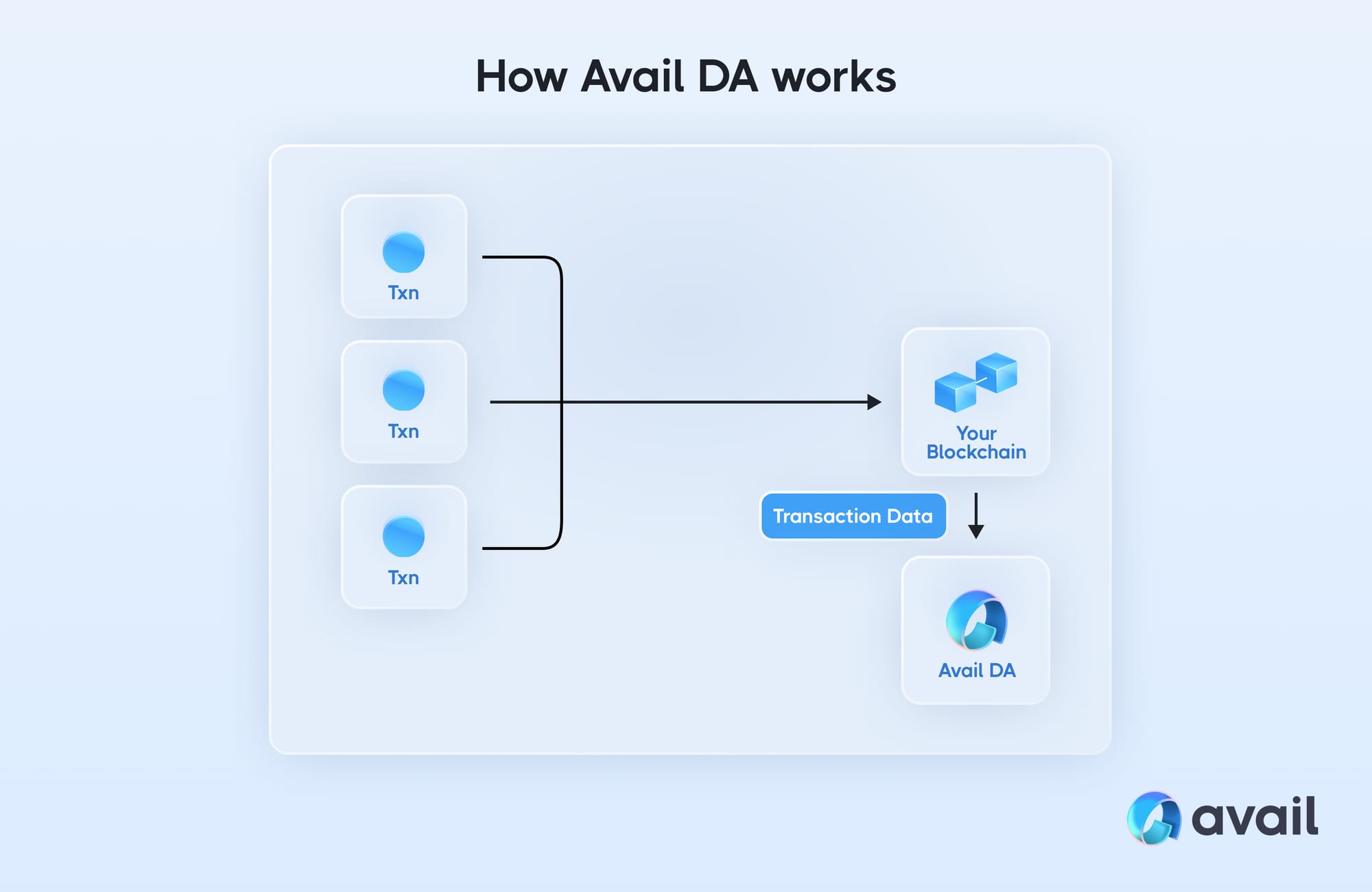
Avail secures data in the Avail blockchain using erasure coding. This widely adopted technique makes the data published on Avail hard to hide.
Inspired by the cryptographic security of ZK-technology, Avail uses validity proofs (KZG commitments) to secure and verify erasure coded data on Avail DA. This provides end users with mathematically verifiable guarantees that data is in its original form, and available, so users do not have to trust any external party. This has made Avail DA the most responsive DA layer on the market, able to provide DA guarantees to users in less than a minute.
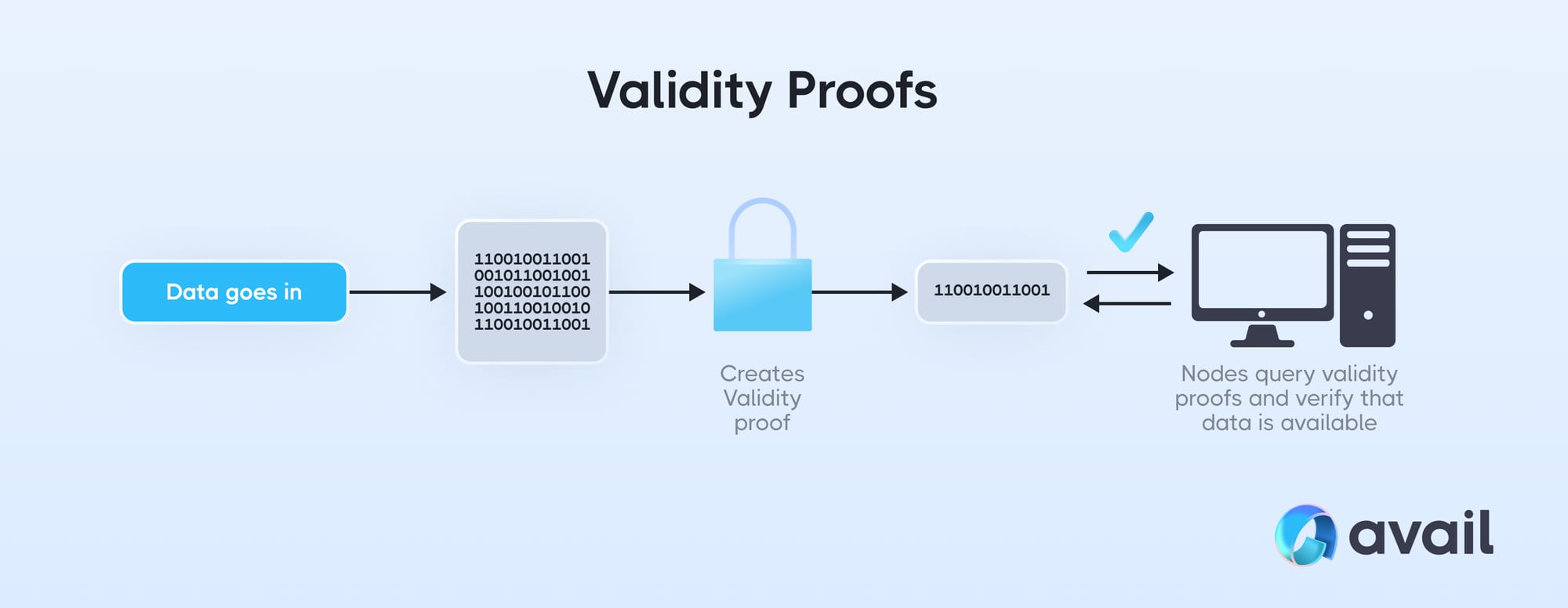
Avail DA itself scales by increasing block size with demand. It does this with support from Avail’s Light Client, an extremely lightweight piece of software that can verify validity proofs from a laptop, phone, raspberry Pi and smart watch. The Avail Light Client randomly samples data from Avail’s blockchain and calculates a confidence score, gaining confidence of all the data’s availability with each successive sample. This provides comparable security to full nodes. As new light clients join, they join the swarm of light clients, forming a P2P network. Both the Avail blockchain itself, and this P2P network scale with demand ensuring that the blockchains that use Avail can keep scaling.
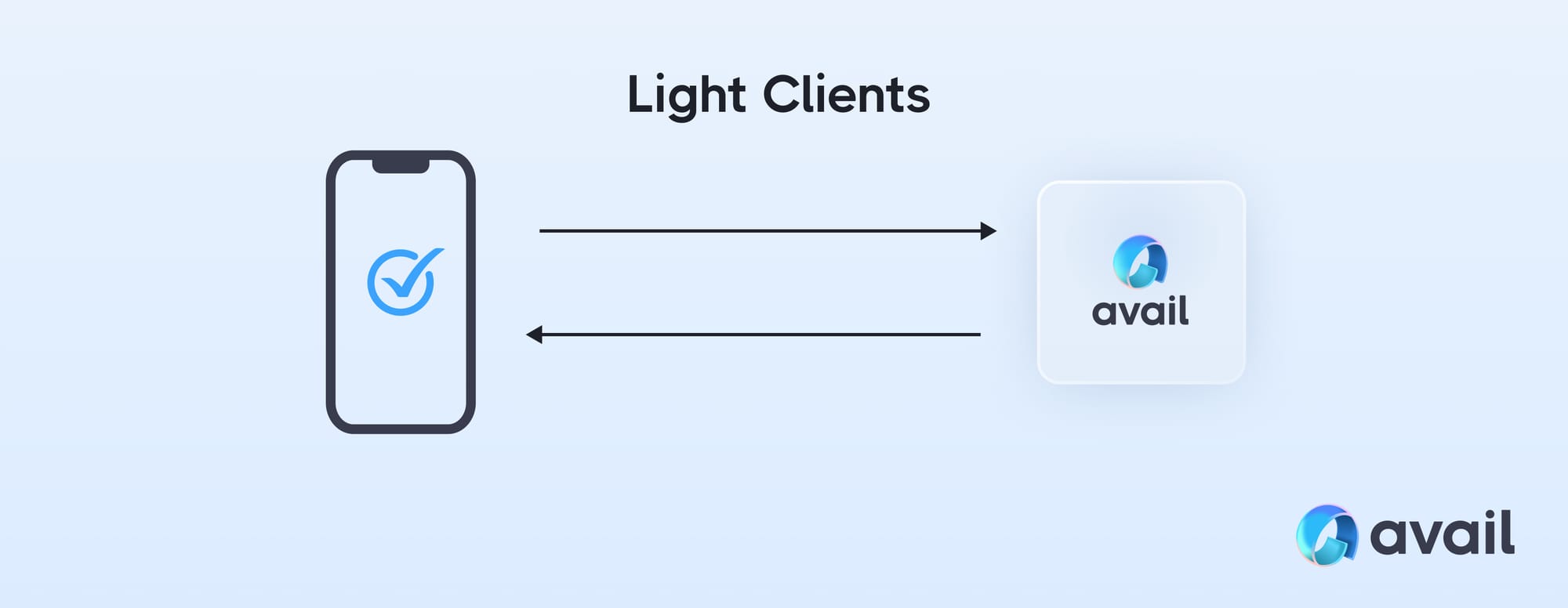
What does the Avail DA launch mean for Developers?
Developers can leverage any one of Ethereum’s top rollup stacks to build blockchains on Avail DA. Being chain agnostic, Avail DA supports any execution environment, inscriptions and Sovereign Rollup constructs too.
Avail DA has been integrated into more than 20 web3 developer tooling providers, enabling blockchains to be easily spun up in minutes. Developers can also get coding now by going to the Avail docs.
What does the Avail DA launch mean for AVAIL token holders?
The AVAIL token is the native asset of the Avail network. It’s used to pay for Avail DA fees and secures Avail via staking. Avail token holders can now stake AVAIL tokens, providing security to blockchains catering to a wider range of use cases on top.
AVAIL token holders can also use the Avail Bridge to transfer AVAIL tokens between the Avail and Ethereum blockchains.
What does the Avail DA launch mean for Avail Validators?
The Avail blockchain is run by a decentralized network of validators. Anyone can become a validator, however because it is a technical task it’s recommended for operator’s with familiarity managing technical infrastructure and/or running validator nodes.
For those interested in running an Avail mainnet validator you can learn more about the mainnet validator rollout.
Taking the First Steps Towards a Unified Web3

Avail DA marks the first phase on Avail’s roadmap to build a permissionless unification layer for web3, where liquidity can be accessed from any chain, and cross-chain bridging will be abstracted away from end-users, dramatically simplifying everyone’s experience using web3.
Leveraging Avail’s unification thesis, Blockchain developers will get to implement advanced multi-step transactions that combine the vast array of blockchains already in production, connecting users and liquidity like never before. Avail Fusion completes the unification layer by providing additional crypto-economic security via re-staking major crypto assets like ETH and BTC.
Avail Ecosystem
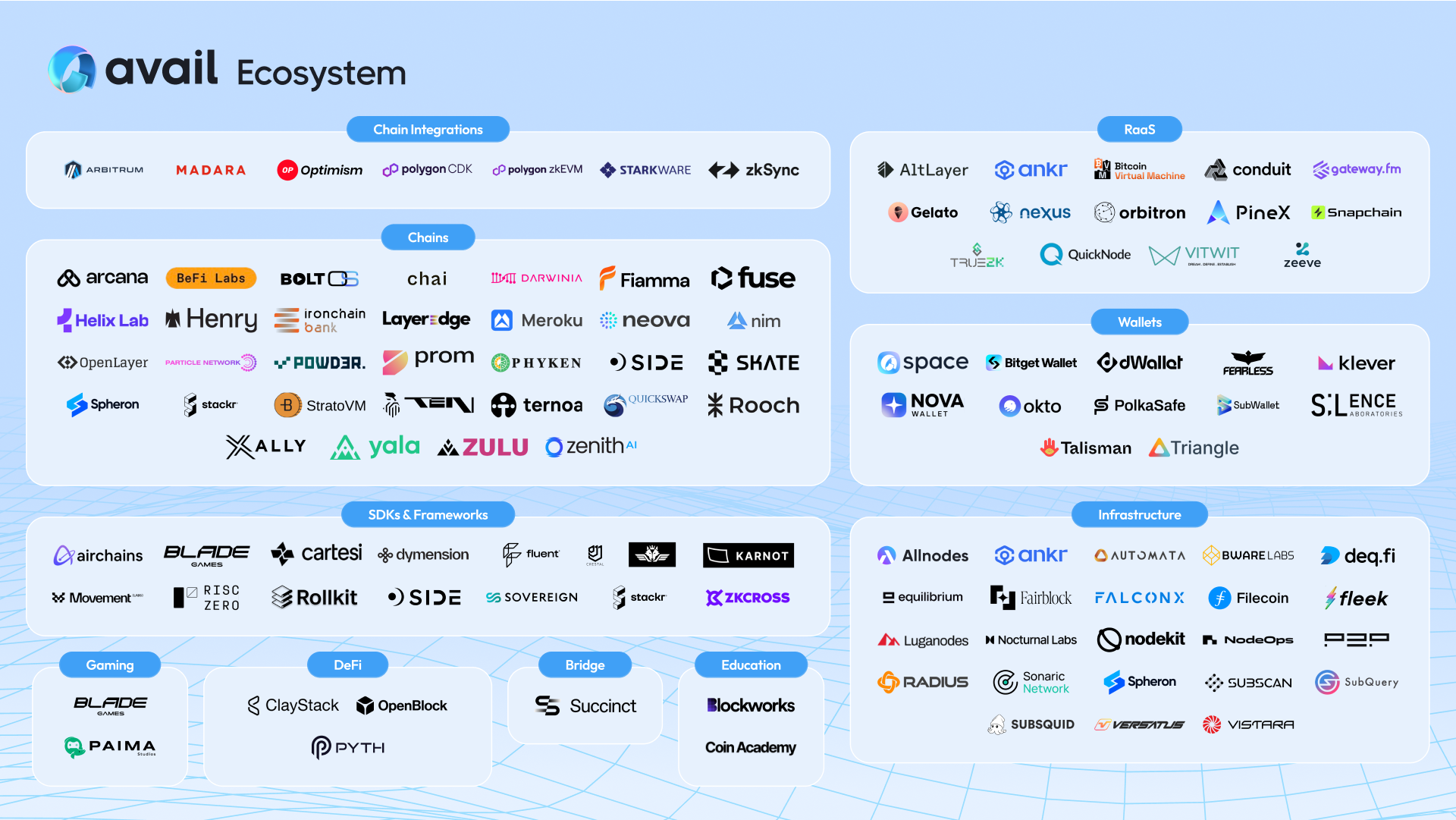
Avail DA already supports a thriving ecosystem of builders. If you would like to learn more about integrating Avail into your project take a look at the Avail documentation or join our developer community on the Avail Forum or Discord and follow us on X.
Avail Network
The Avail Mainnet started with internal stress testing, mainnet readiness checks, partner tooling integrations and validator onboarding from July 4th, 2024 and is now public for the world to use so we can all keep scaling!

